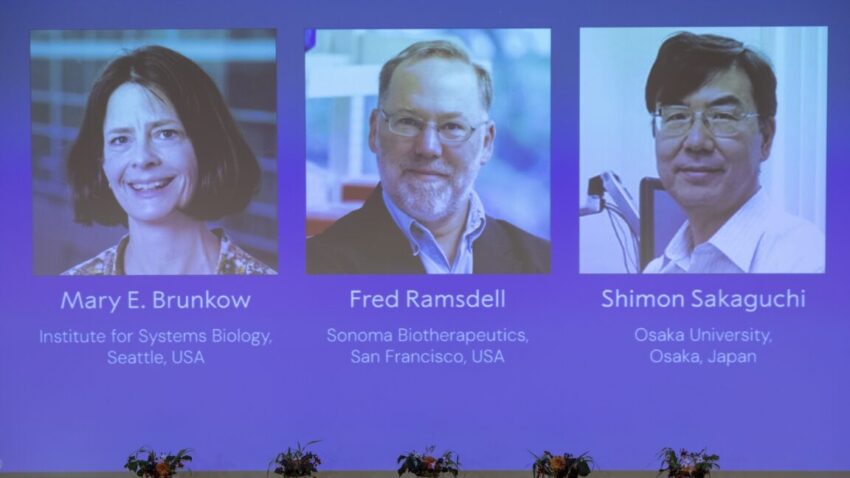
discovery of cells that keep immune responses The 2025 Nobel Prize in Physiology or Medicine has been awarded to Mary Brunkow, Fred Ramsdell, and Shimon Sakaguchi for their groundbreaking discovery of regulatory T cells, which play a crucial role in maintaining immune system balance.
discovery of cells that keep immune responses
Understanding the Immune System
The immune system is a complex network of cells and proteins that defends the body against infection. It is designed to recognize and eliminate pathogens such as bacteria and viruses while distinguishing them from the body’s own cells. This balance is essential for health, as an overactive immune response can lead to autoimmune diseases, where the body mistakenly attacks its own tissues. Conversely, an underactive immune response can result in increased susceptibility to infections and diseases.
The Role of T Cells
Among the various components of the immune system, T cells are particularly significant. They originate from stem cells in the bone marrow and mature in the thymus, a small organ located in the chest. T cells can be broadly categorized into two main types: T helper cells and T killer cells. T helper cells assist in activating other immune cells, while T killer cells directly attack and destroy infected or cancerous cells. However, the immune system’s effectiveness relies not only on these aggressive T cells but also on regulatory T cells, which have a more nuanced role.
The Discovery of Regulatory T Cells
Mary Brunkow, Fred Ramsdell, and Shimon Sakaguchi’s research has illuminated the function of regulatory T cells, which are essential for maintaining peripheral immune tolerance. This concept refers to the immune system’s ability to avoid attacking the body’s own cells while still responding effectively to external threats. The trio’s work has shifted the understanding of immune tolerance from a central process occurring in the thymus to a more decentralized mechanism involving regulatory T cells that circulate throughout the body.
Historical Context
Prior to this discovery, the prevailing belief was that immune tolerance was primarily established in the thymus. Researchers thought that T cells that could potentially cause autoimmune responses were eliminated during their maturation process. However, Brunkow, Ramsdell, and Sakaguchi’s findings revealed that regulatory T cells actively suppress inappropriate immune responses even after T cells have matured and entered the peripheral tissues.
Mechanisms of Action
Regulatory T cells, often referred to as Tregs, function by producing anti-inflammatory cytokines and directly inhibiting the activation and proliferation of other immune cells. This regulatory mechanism is crucial for preventing excessive immune responses that could lead to tissue damage. The balance maintained by Tregs ensures that the immune system can effectively respond to infections while minimizing the risk of autoimmune diseases.
Implications of the Discovery
The implications of understanding regulatory T cells are profound, influencing both basic research and clinical applications. By elucidating the mechanisms through which Tregs operate, researchers can develop targeted therapies for a variety of conditions, including autoimmune diseases, allergies, and even cancer.
Autoimmune Diseases
Autoimmune diseases, such as rheumatoid arthritis, lupus, and multiple sclerosis, occur when the immune system mistakenly attacks the body’s own cells. By enhancing the function of regulatory T cells or increasing their numbers, it may be possible to develop new treatments that restore immune balance and alleviate symptoms in patients suffering from these conditions.
Allergies and Asthma
Similarly, allergies and asthma are characterized by an overactive immune response to harmless substances. Understanding how regulatory T cells can modulate these responses opens up avenues for innovative therapies that could prevent or treat allergic reactions and asthma attacks.
Cancer Immunotherapy
In the field of oncology, the role of regulatory T cells is particularly complex. While Tregs can help prevent autoimmune responses, they can also inhibit the immune system’s ability to attack tumors. This dual role presents a challenge in cancer immunotherapy, where the goal is to enhance the immune response against cancer cells. Research into manipulating Tregs could lead to more effective cancer treatments by either reducing their suppressive effects in the tumor microenvironment or harnessing their properties to create a more balanced immune response.
Stakeholder Reactions
The announcement of the Nobel Prize has elicited a range of responses from the scientific community and beyond. Many researchers have praised the award as a recognition of the importance of understanding immune regulation. Dr. Anthony Fauci, a prominent immunologist, stated, “This award highlights the critical role of regulatory T cells in maintaining immune homeostasis and opens new doors for therapeutic interventions.”
Furthermore, pharmaceutical companies are likely to take a keen interest in the implications of this discovery. As the understanding of Tregs deepens, there may be a surge in research and development aimed at creating drugs that can modulate their activity. This could lead to a new class of immunotherapies that target regulatory mechanisms rather than just the effector cells of the immune system.
Future Directions in Research
The work of Brunkow, Ramsdell, and Sakaguchi is just the beginning. The field of immunology is rapidly evolving, and researchers are now tasked with exploring the full range of functions and mechanisms of regulatory T cells. Future studies may focus on the following areas:
- Identification of Subtypes: Regulatory T cells are not a homogenous group. Identifying different subtypes and understanding their specific functions could lead to more targeted therapies.
- Interactions with Other Immune Cells: Investigating how Tregs interact with other immune cells, such as dendritic cells and macrophages, will provide insights into the broader immune landscape.
- Role in Aging: As the immune system ages, its functionality declines. Understanding how Tregs change with age could inform strategies to enhance immune responses in older adults.
- Environmental Influences: The impact of diet, microbiome, and environmental factors on the function of regulatory T cells is an emerging area of research that could have significant implications for public health.
Conclusion
The 2025 Nobel Prize awarded to Mary Brunkow, Fred Ramsdell, and Shimon Sakaguchi marks a significant milestone in the field of immunology. Their discovery of regulatory T cells and their role in maintaining immune tolerance has reshaped our understanding of the immune system and its complexities. As research continues to unfold, the potential for new therapeutic strategies targeting regulatory T cells offers hope for treating a wide range of diseases, from autoimmune disorders to cancer.
Source: Original report
Was this helpful?
Last Modified: October 7, 2025 at 5:35 am
4 views















